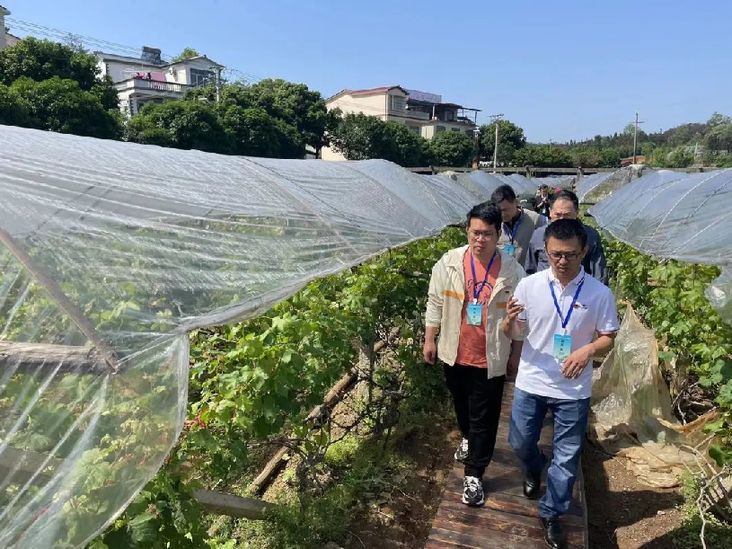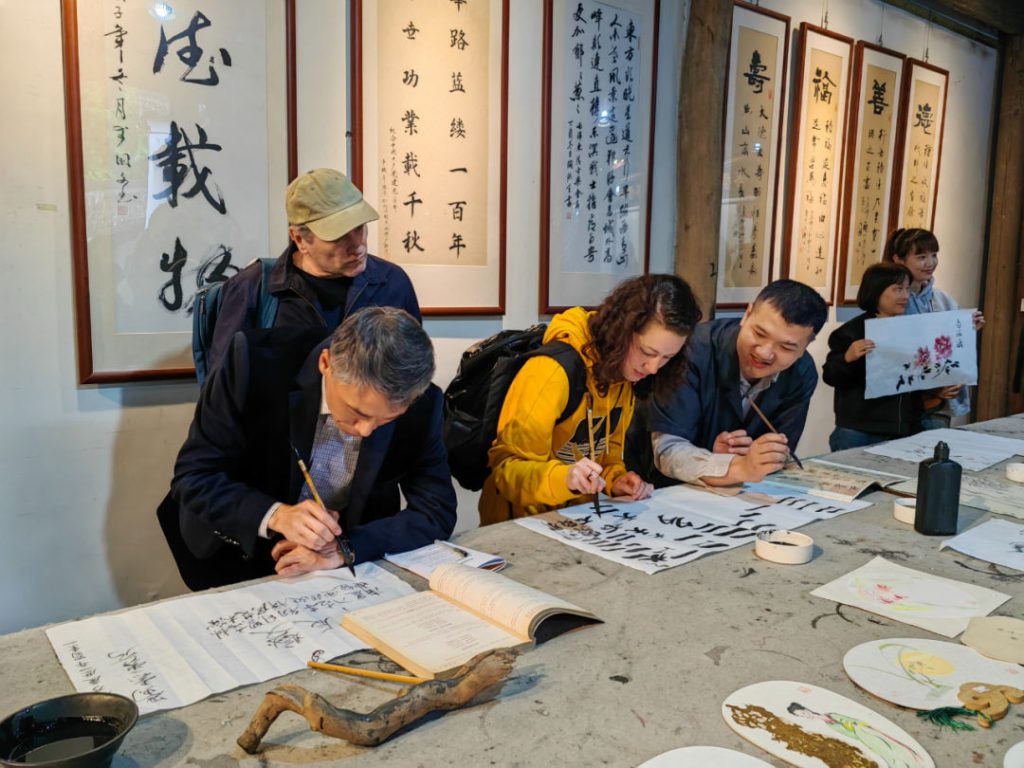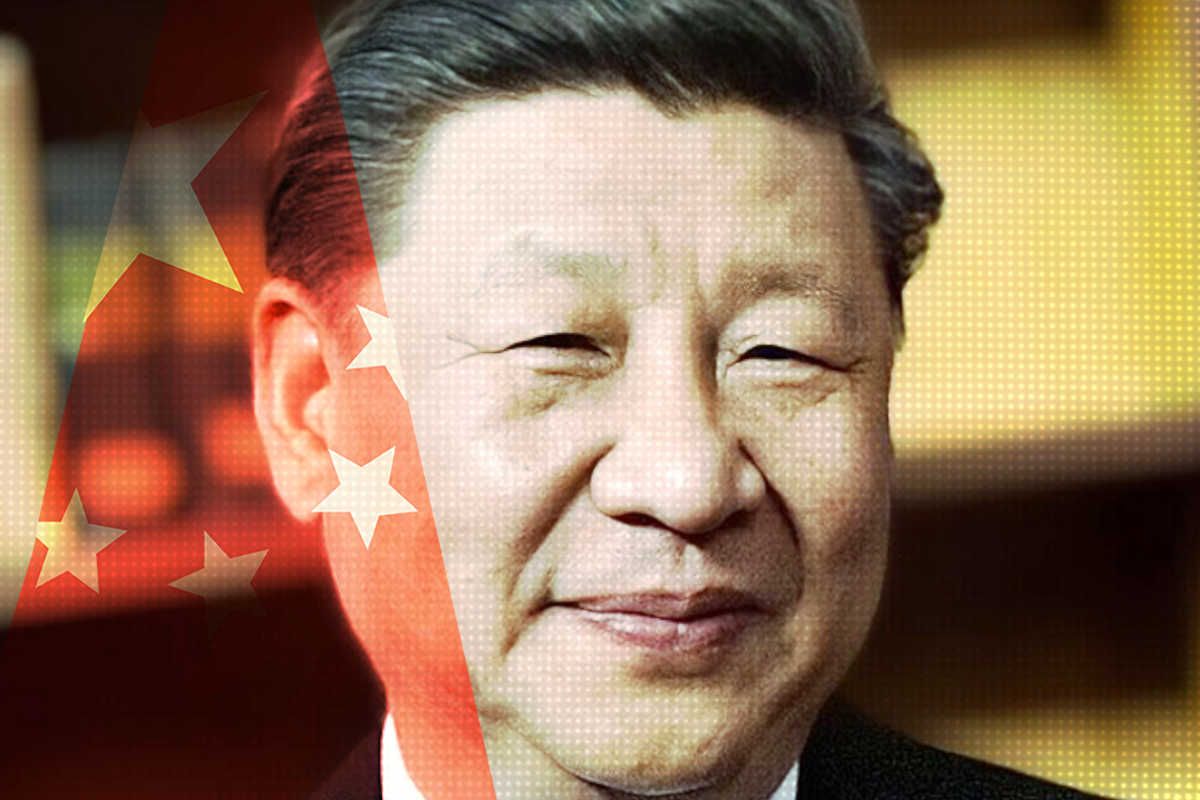Tracking Control
A Tale of Two Junkets
A gaggle of reporters is herded along rows of grape vines, led by beaming bureaucrats. They stroll past hardworking, ruddy villagers who invite them to their homes to share memories of Xi Jinping’s “inspection” of the area two years earlier and the momentous changes that have transpired since.
When they return home, these reporters will file paeans to the beautiful scenery and industrious people they found in rural Guangxi. National, regional, and industry publications will praise the “Long March spirit” of its workers and the wisdom of local technocrats.
The spectacle of foreign press junkets enjoying all-expenses-paid tours in China — themed around the achievements of government-led development programs, the promotion of up-and-coming tourism destinations, or the denial of mass atrocities —is all too familiar. But this one is different. The reporters are all Chinese, hailing from the China Daily, China Culture Daily, China Travel News, Farmers’ Daily, and other publications.

They are part of another, parallel phenomenon: the domestic press junket.
Given a strong propaganda and censorship culture and the leadership’s constant emphasis on discipline, one might assume that Chinese journalists are already well primed — unlike their international counterparts — to “tell China’s story well,” focusing on the positives of local and national leadership. Notwithstanding, themed propaganda tours offer a further opportunity for authorities to “guide” coverage at media across the country.
The tour around the southwestern Guangxi region was arranged in May by the All-China Journalists Association (ACJA), which describes itself as “a national non-governmental organization” but in fact serves as an important layer for exercising the Chinese Communist Party’s control over news organizations and the country’s more than one million registered journalists.
Unlike your typical industry organization, the ACJA is also an enforcement agency, rewarding compliance with the CCP’s demands and punishing perceived failures. The ACJA’s collection of the articles produced by the tour said that China’s journalists “need to be like the Red Army on the Long March.”

One month earlier, the ACJA and the Information Office of the People’s Government of Zhejiang co-organized a tour of the eastern province tailored for foreign journalists. Reporters from the Irish Times, Voice of Vietnam, and Korea’s Asia Economic News visited the provincial capital Hangzhou, Huzhou, Shaoxing, and Jinhua. The whistle-stop tour followed a familiar template: demonstrations of traditional crafts such as silk weaving, wood carving, and calligraphy, followed by visits to model housing developments, an e-gaming center, and the mammoth Yiwu International Trade City, the world’s biggest small commodities market.
From practitioners of ancient traditions to forward-looking young entrepreneurs, it was a buffet of “good China stories” for the guests, some of whom said they were serial participants of such official press tours. This particular series of tours, started in 2020, invites tourists “to experience China’s economic, social and cultural development at the grassroots level and to present a realistic, three-dimensional and comprehensive China.”

In a way, both tours shared a common overarching theme: the Party as both the great modernizer and the protector of China’s history and environment, the prism through which the light from past glories is refracted into an even brighter future.
For the foreign press, the narrative is national in scale, playing out in one of China’s wealthiest provinces, with its former imperial capital famed for its beautiful scenery and sought-after products. For domestic raconteurs, the story of the Party’s largesse and leadership is best embodied by the rural hinterlands of Guangxi, which has languished economically behind its far more successful twin, Guangdong.
The area of the region explored also has the distinction of being the site of a pivotal event in the Long March, when retreating Communist guerrillas wound their way from the Jiangxi Soviet to the arid Loess Plateau in the 1930s. On the banks of Guangxi’s Xiangjiang River, the Red Army broke through the National Army’s blockade at the cost of 50,000 soldiers out of a total of 86,000. The domestic press tour was replete with calls for media to emulate the “Long March spirit” (长征精神), stressing the importance of “red genes” (红色基因) — a kind of political and cultural inheritance, the celebration of which is a means of consolidating the Party’s position within the national identity and thereby constructing the legitimacy of the CCP regime.
The tale of these two junkets, though they may be packaged differently for two distinct audiences, together provides an illustration of how the party-state shapes coverage in both the domestic and international press through nominally independent industry organizations such as the ACJA. It also shows that there is nothing exceptional about the foreign press junket. It may be deployed somewhat more subtly than its domestic counterpart but is just a different version of the same, well-worn tool as effective on state media “news workers” — as the ACJA calls them — as it is to supposedly savvy foreign correspondents.





















